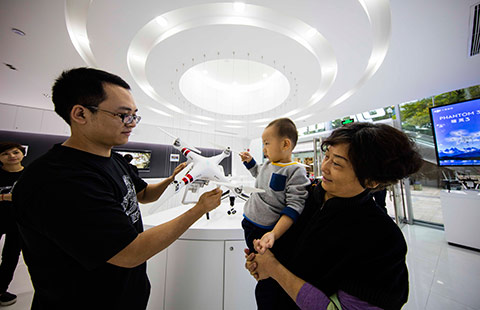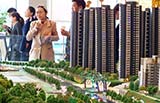Silver lining in China's lackluster economic data
(Xinhua) Updated: 2016-03-15 09:49BEIJING - Downward pressure on China's economy may remain, but indicators are starting to show the economy stabilizing and the effects of supportive measures are beginning to be felt.
Mixed economic data for the first two months was released on Saturday. Industrial output grew below expectation, house sales improved and a fixed-asset investment picked up. These are good signs in an economy which has been slowed to allow for restructuring while overcapacity is slashed.
"January and February activity data were mixed, but showed signs of growth stabilization and even a quicker recovery than expected in some pockets of the economy," said Julia Wang, an HSBC economist.
Wang's research note described the recovery in the property market as the "most positive sign." Sales of residential property jumped 28 percent in terms of floor space, and 43.6 percent in revenue terms, which compares very favorably with last year's gains of 6.9 percent and 14.4 percent in the same period. Property investment grew 3 percent year on year in the first two months, compared with a 2.1-percent decrease in December.
"Property investment appeared to have bottomed out, while infrastructure investment grew at a robust pace," said Wang.
She expects urbanization policy to play a key role in destocking in third and fourth tier cities, maintaining the recovery in housing investment.
Shen Jianguang, chief economist of Mizuho Securities, attributed the rebound in property market mainly to the cuts in transaction taxes and interest rates.
Growth of fixed-asset investment as a whole, which picked up very slightly to 10.2 percent in the first two months, also showed "tentative signs" of stabilization.
"Given strong commitment to a more expansionary fiscal policy and a large backlog of approved projects, we expect infrastructure investment to remain a key growth driver in 2016," said Wang of HSBC.
However, industrial production and retail sales data came in weaker than expected, with the former posting the lowest monthly growth since November of 2008, but behind the relatively weak data is some encouraging news.
Wang attributed the slower industrial output growth mainly to slower growth in heavy industries, mostly overcapacity sectors.
"Industrial production will likely be the most affected by efforts to cut overcapacity in 2016 given that the combined size of all sectors with overcapacity make up a third of total industrial output," Wang added.
In contrast, output growth of the emerging and high-end industries is speeding up, which means economic restructuring is making progress. Production of new-energy vehicles, integrated circuits and industrial robots, rose 75.9 percent, 12.6 percent and 17.7 percent, respectively, .
With signs of stabilizing and a rebound in fixed-asset investment and property investment, China's economy can be expected to rebound moderately in the second quarter.
- China hopes to stem spending power outflow
- China central bank continues forex sales in Feb
- China vows to invest more in infrastructure, public services
- Property developer Vanke seeks rail expansion
- Shenwu Environmental develops clean coal tech
- Applied Materials eyes expansion in China
- Banking regulator vows to get tough on online brokers
- Passion to stay fit sweeping white-collar workers
















